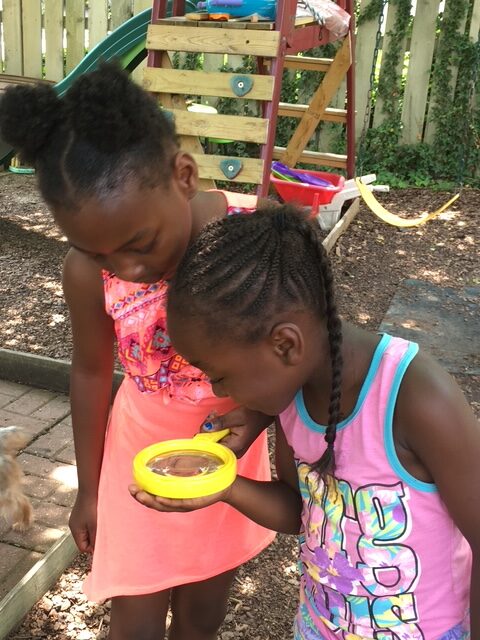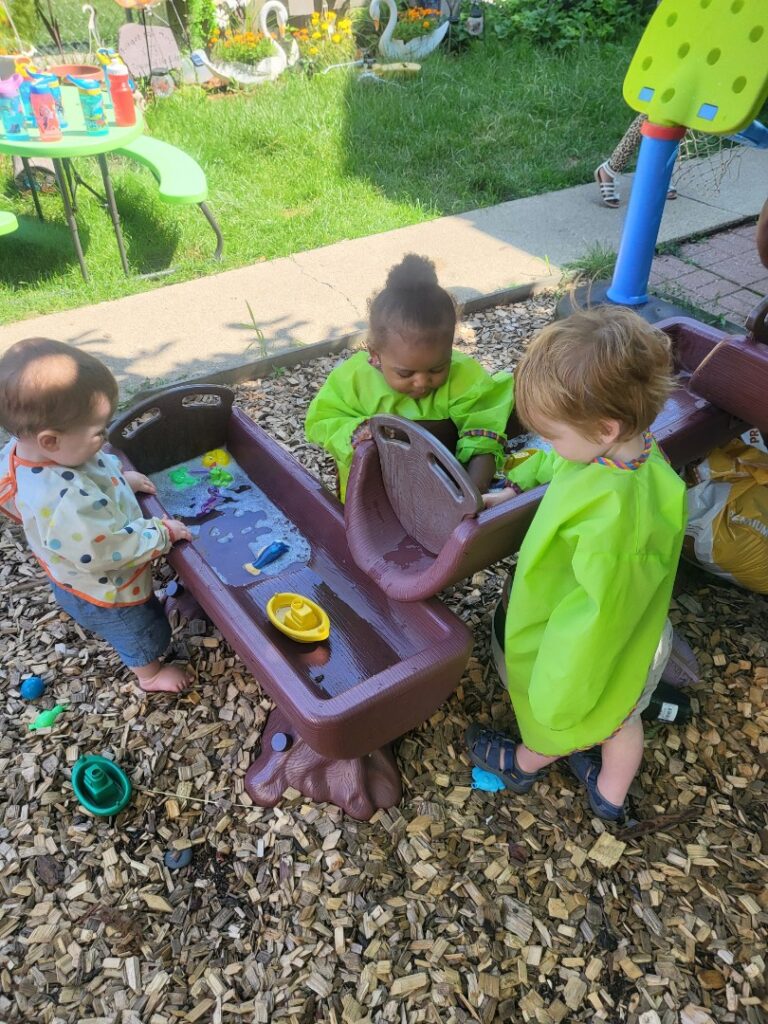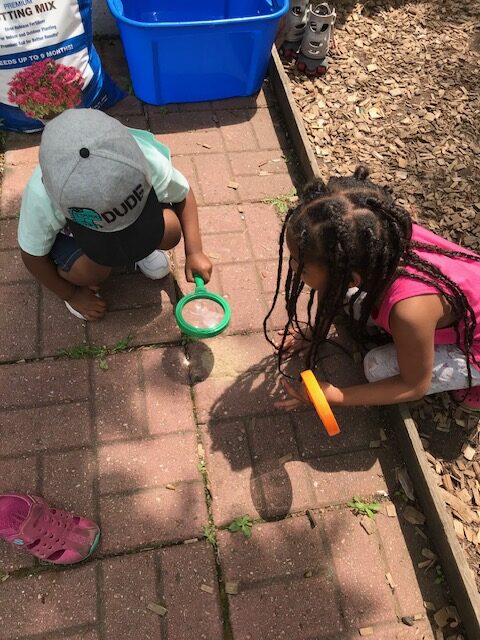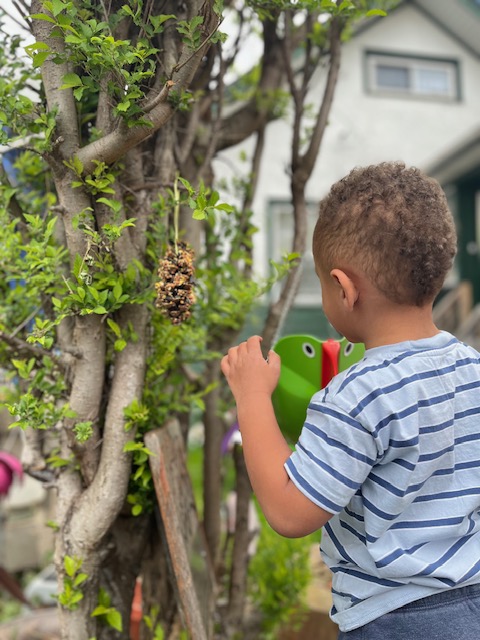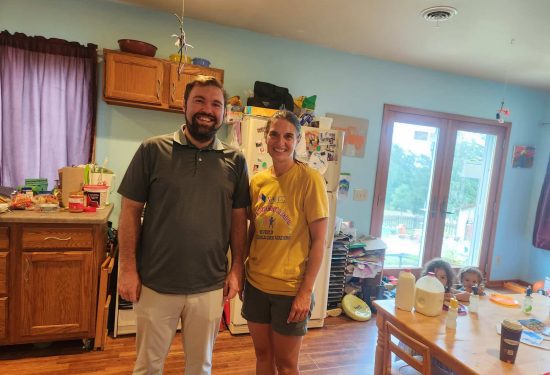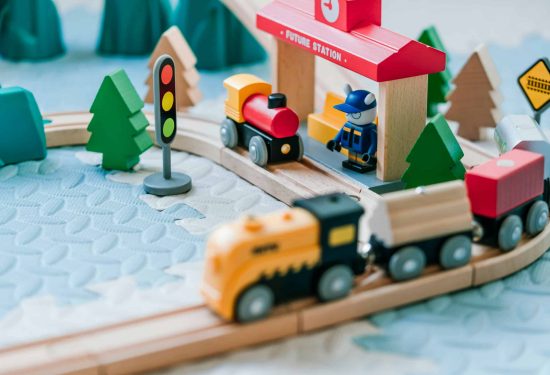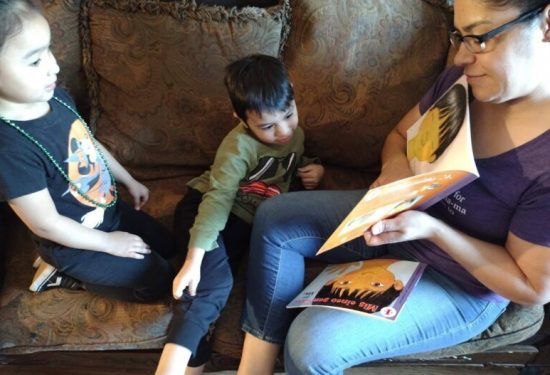Many of us can recall the joy of playing outside during our childhood. Whether it was jumping rope on cement sidewalks, examining the patterns of various insects, or jumping in mud puddles, there is a special type of learning that happens when children play in nature.
Nature-based play and curriculum has experienced a surge in the field of early childhood, perhaps, in part, because of the decades-long steady erosion of young children’s play as a vehicle for learning or the decline of opportunities for physical activity and outdoor play at home and at school. Today, books, conferences, and even college courses abound with a focus on reintegrating nature and outdoor experiences within the early childhood curriculum. Early childhood educators, including home-based child care providers, around the nation are exploring ways to bring the natural world to life as a classroom for children. Their love for facilitating learning for small groups of young children can be seen in their endless creativity to design unique and real-life learning for young children using the environment as curriculum material.
During NAEYC’s Week of the Young Child, Home Grown features the stories of home-based child care providers and educators who have a passion for nature-based curriculum. These providers have created nature-based programs in their homes and use outdoor play as an opportunity to ignite a passion for the natural world in young children while facilitating learning and development.
Chris Nelson, Owner/Operator of Mountain View Child Care in Troy, Vermont
“Being rural and in Vermont, and I grew up on a farm, I have a love of nature. I believe if you expose kids and get them interested when they’re young, then they’re more apt to, when they’re older, actually look at nature.
So I want kids to be able to look at the world or at nature, not as a big, scary place, but as a way that they can interact with it and love it and then they’re more apt to take care of it and appreciate it and not litter.
When I started as a home-based child care provider, there was no money in child care at that time, and I wanted to be sure I could give the kids something new every day, so that’s why I edged originally towards offering a more nature-based play. It could be as simple as, “What’s under that decaying log?” and flipping it over and seeing the bugs and the tunnels underneath.
We have a lot of animals and the kids track them and try to figure out when they’re coming out and when they’re going in. So we’ll actually follow their tracks and we’ll do a big month of “What did we see?” because you can tell by the depth of the mud. It’s identification, but really being inquisitive, making predictions. And in a lot of it, I’ll let them guide. Their interests will guide me because it’s their job to learn, but it’s my job to teach. So all that higher-level thought, why are we doing this? And what’s coming from it? Instead of me giving them answers, they do a lot of finding it out for themselves and I’ll scaffold that. When they’re in control of the engagement they have with something, then it lasts longer.”
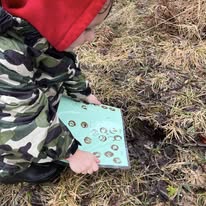
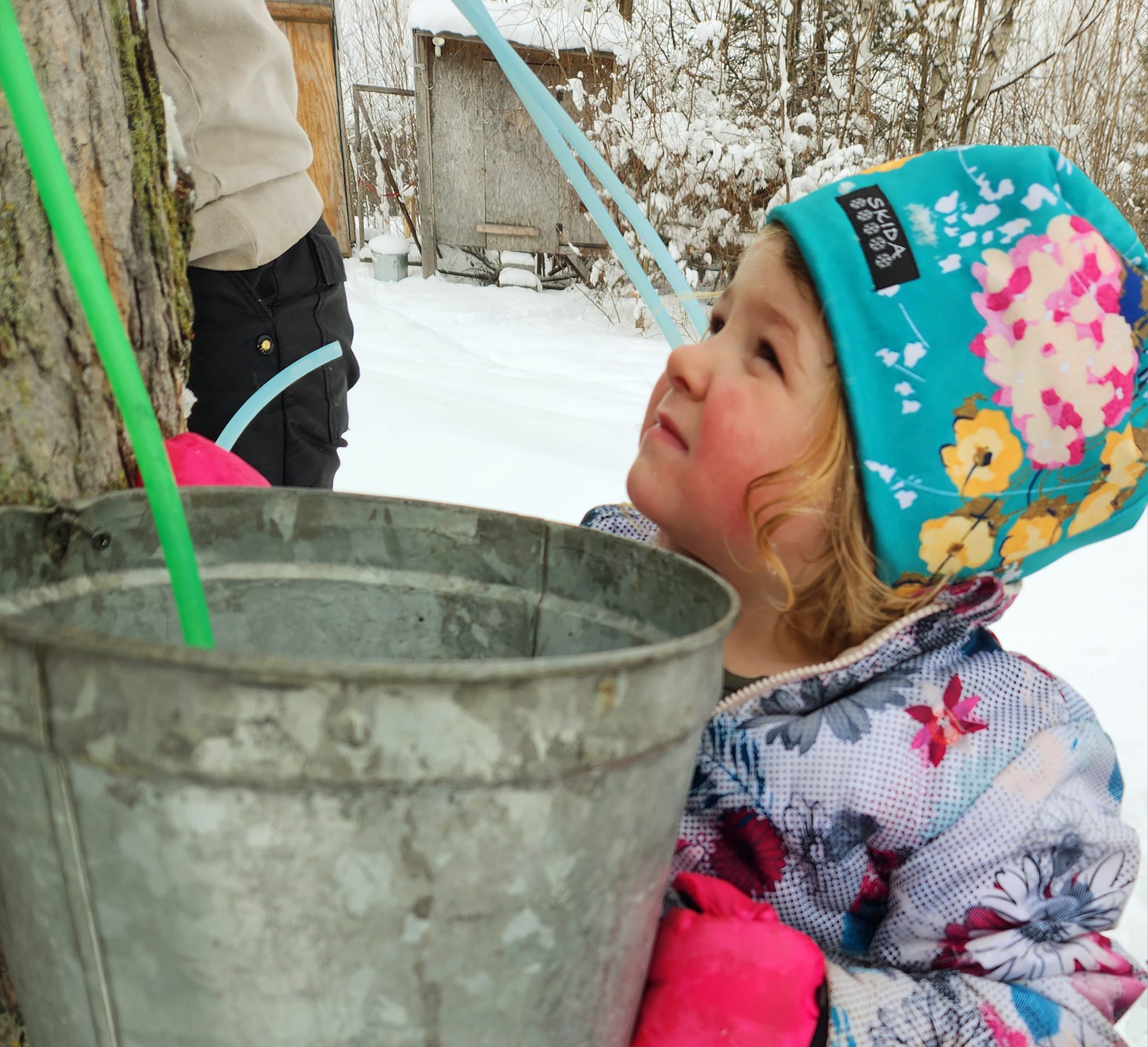
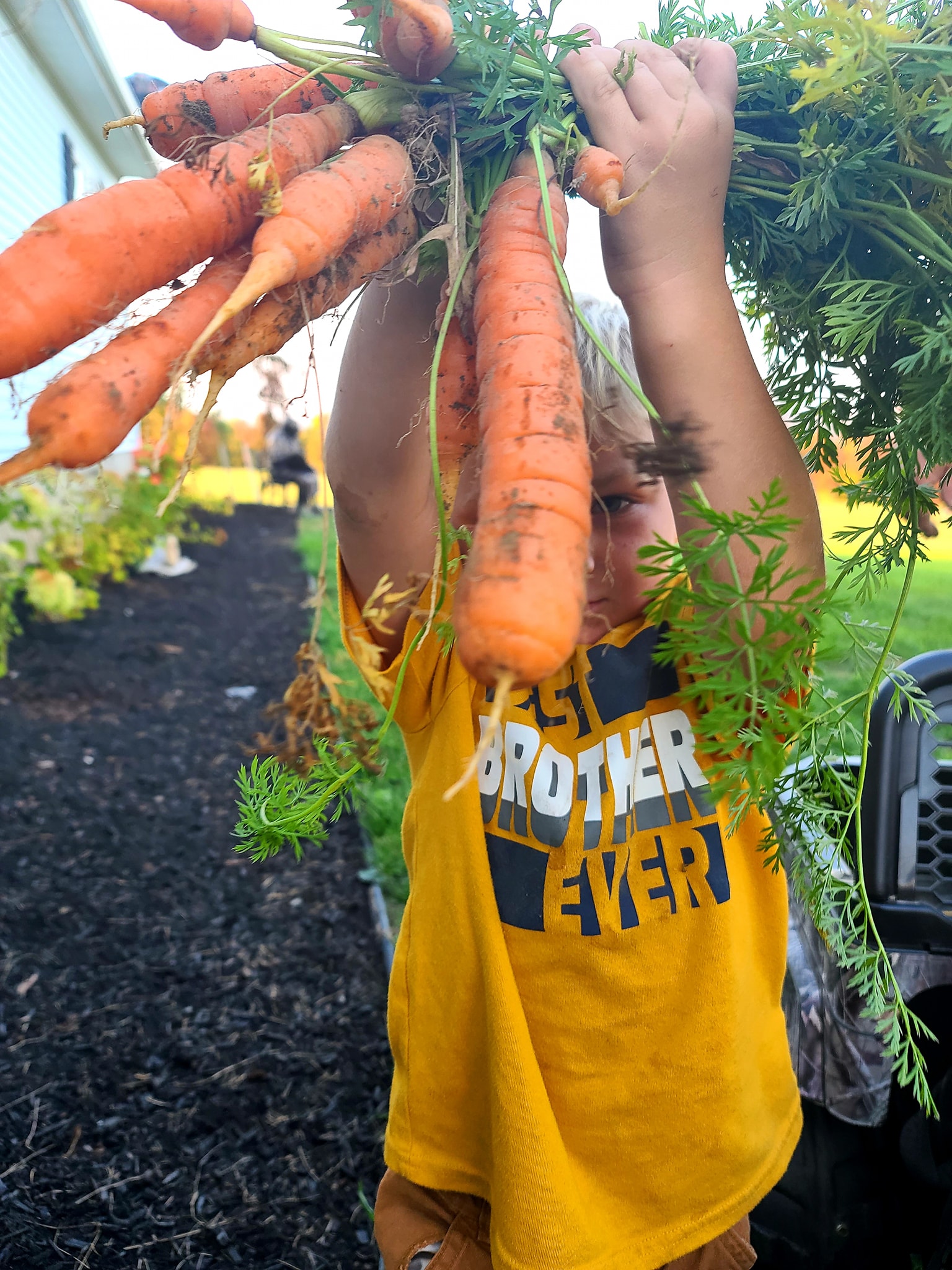
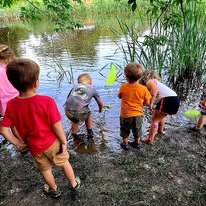

Monica Wince, Owner/Operator of Monica Wince’s Family Child Care Home in Upper Pottsgrove, Pennsylvania
“Bringing experiences with the natural world is important to my mission as a home-based child care provider because it improves physical and mental health because of active play. Having them outside, getting fresh air, and running around reduces stress, lowers anxiety, which we all need. When we’re in the natural world, it promotes cooperation and conflict resolution.
Children learn problem-solving in nature-based play. I built a mud kitchen a couple years ago because I remember playing in the mud growing up. Being outside and playing in the dirt, in the mud, digging for worms, planting things, that’s what we’re supposed to do growing up. It helps with problem-solving, observation, and creativity through exploration and interaction. And there’s very rich sensory experiences when we’re making soups in the mud kitchen. You have to gather different grasses and pine cones and bark and all the good ingredients for a good mud kitchen soup. They learn more empathy, understanding, triumph and support, cooperative problem solving.
Being outside increases their imagination, curiosity, and creativity. It increases their sense of wonder and imagination and behavior. They behave in ways that they learn how to protect the environment, appreciate wildlife and conservation because we plant stuff here. We grow things, foods that we eat and flowers. We have deer that go through the yard, so we feed the deer.
We grow our own foods here – fruits and vegetables. I have learned that once children are participants in growing the vegetable, either from seed or from a plant, and do the vested time in weeding and watering, they’ll eat it. I have children eating things they’ve never had before.”

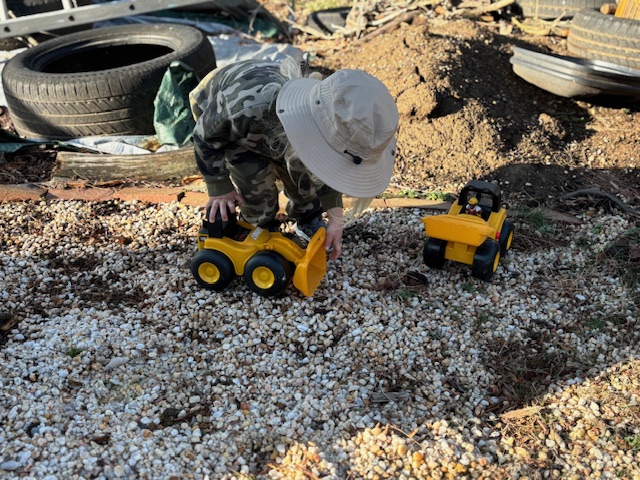
Melody Robinson, Nature Explore Certified Family Group Home Daycare Owner/Operator in Oak Park, Illinois
“Nature is what I call my happy place. I’m a Baby Boomer, and so we were outside a lot, and I got a chance to make sand pies and mud pies and chase butterflies and just be outside constantly. And the way things are going now, children are not outside as much; they like to stay in and play with the tablets, the TV, or on the phone.
In the spring, we start to plant our own vegetables, and then I allow the children to water, maintain, and care for those vegetables, harvest them and cut them up and eat them, so they have a really good understanding of growing food. We plant flowers and things that draw butterflies, that draw hummingbirds, you know, pollinators, so they could understand and they could see the beauty of those butterflies.
I believe that once you connect kids with nature, they understand and appreciate it. They’ll be better stewards, they’ll be concerned about all the things that are negative that are happening to nature. But if they have no connection, it’s like, “So what? It’s no big deal, it doesn’t affect me.” We need the trees, and the trees need us. We go on nature walks to look, or paint outside on a wooden fence. We smell, touch, and compare plants of different colors and different heights. We have opportunities to cook the things that we grow and even things that we don’t grow.
Children learn to be aware of things around them and how we need each other when they engage in nature-based play.”
